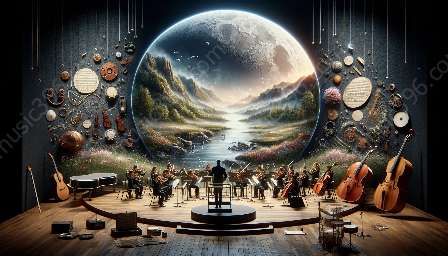Sound recording technology has evolved tremendously over the years, shaping the way we create, distribute, and experience music and sound. From the earliest discoveries to modern innovations, this topic cluster explores the historical developments in sound recording technology and its impact on sound studies and music reference.
The Early Beginnings
The history of sound recording can be traced back to the 19th century, with the invention of the phonograph by Thomas Edison in 1877. This early form of recording used a diaphragm and stylus to etch sound waves onto a rotating cylinder, creating the first playable sound recordings. This revolutionary invention laid the foundation for the development of sound recording technology and marked the beginning of a new era in music and sound preservation.
The Rise of Magnetic Tape
One of the most significant advancements in sound recording technology came with the introduction of magnetic tape in the mid-20th century. German engineer Fritz Pfleumer is credited with developing the first practical magnetic tape in the 1920s. This innovation allowed for the recording and playback of sound using magnetic particles on a long strip of plastic film coated with iron oxide. Magnetic tape revolutionized the music industry, enabling high-fidelity recording and playback, as well as the editing and manipulation of sound recordings.
Digital Revolution
The advent of digital audio technology in the late 20th century marked a major turning point in the history of sound recording. Digital recording, which involves converting sound waves into numerical data, offers unprecedented clarity, fidelity, and flexibility. The introduction of compact discs (CDs) in the 1980s and digital audio workstations (DAWs) in the 1990s further transformed the way music and sound are recorded, edited, and distributed. Digital technology has significantly impacted sound studies and music reference, influencing the way scholars, musicians, and enthusiasts explore and analyze sonic phenomena.
Modern Innovations
In recent years, sound recording technology has continued to evolve rapidly, with advancements such as high-resolution audio, surround sound formats, and virtual reality (VR) audio. High-resolution audio, which offers higher sampling rates and bit depths than standard CD audio, has garnered attention for its ability to capture more nuanced and detailed sound recordings. Similarly, surround sound formats and VR audio technologies are redefining the spatial and immersive aspects of sound reproduction, enhancing the listener's experience and opening up new possibilities for creative expression.
Impact on Sound Studies and Music Reference
The historical developments in sound recording technology have had a profound impact on sound studies and music reference. These advancements have expanded the possibilities for research, analysis, and preservation of sonic artifacts, enabling scholars and practitioners to delve deeper into the cultural, artistic, and technological dimensions of sound. Furthermore, the accessibility and democratization of recording technology have empowered a wide range of musicians and sound artists to create and share their work, contributing to the diversity and richness of music and sound culture.
Overall, the evolution of sound recording technology continues to shape the ways in which we engage with and understand sound, offering new avenues for exploration and expression in the fields of sound studies and music reference.









































